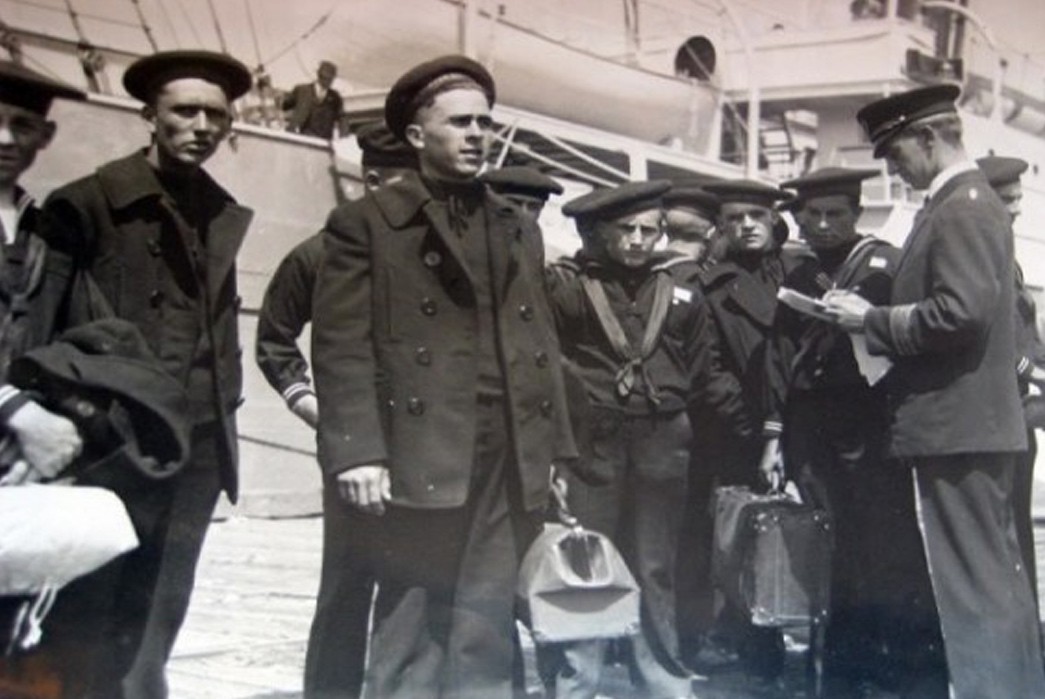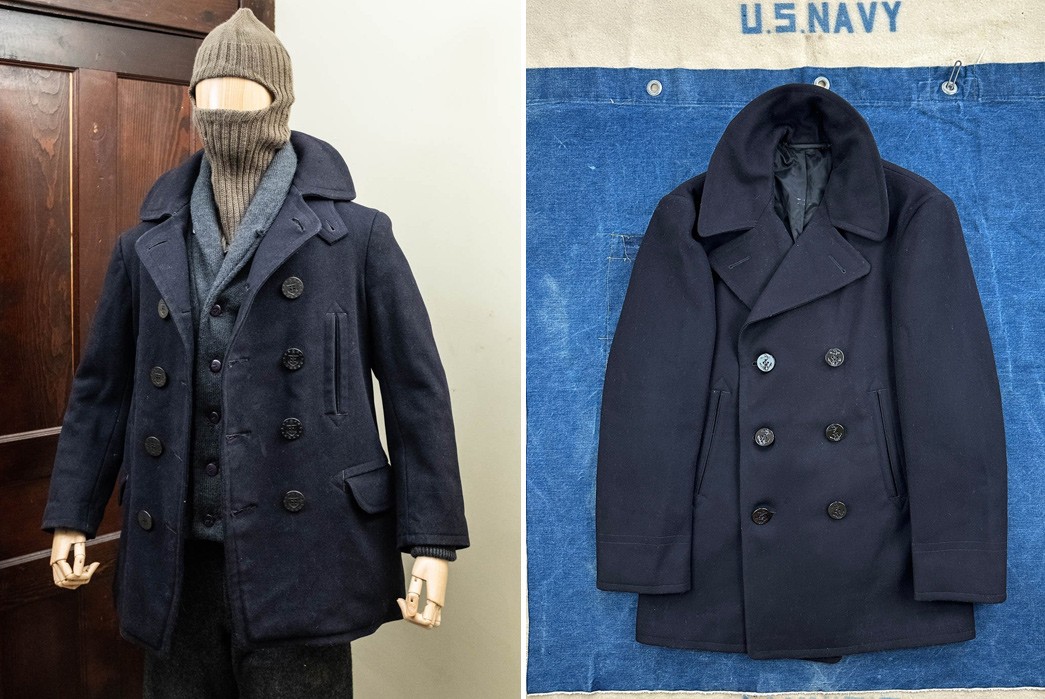- Heddels
- Posts
- Nov 5 - Peacoat History
Nov 5 - Peacoat History
Together with
We track the history of the peacoat, a classic piece of outerwear that began in the Dutch Navy but was quickly adopted as a winter staple.
Matthew Wong & James Smith

Whenever the mercury starts to dip there has always been one piece of outerwear that emerges in force on the city streets. The peacoat has been one among the shortlist of items in menswear that has become a staple in the majority of closets and wardrobes as this versatile piece of naval outerwear seems to have made the leap from military issue to complete mainstay in menswear.
Why are so many drawn to this particular silhouette? Why do designers and labels seem so willing to sell slightly tweaked peacoats every fall season? By taking a look at the history and the origins of the coat, we can see the popularity of the peacoat runs deeper than just a seasonal trend.
Military Influences

The history of the peacoat is deeply rooted in military and naval backgrounds. Surprisingly, the jacket has been around since the 1800s when the first variation was worn by the then-naval powerhouse, the Dutch. The name Peacoat originated from the Dutch word “pije” (they pronounce their j’s differently to us), which was used in the Dutch language to describe a coat made from coarse wool fabric.
While the Dutch are credited with inventing the peacoat, the British navy can take credit for popularizing it. The British version of the coat was similarly designed for naval duties, particularly as a uniform for petty officers. Thick, tightly woven melton wool was used to protect sailors from the biting cold and blistering winds of seafaring.
The peacoat then made its way across the Atlantic for a third appearance, this time with the American Navy. The U.S. Navy adopted the coat and used it for “reefers,” sailors responsible for the unenviable task of climbing up the rigging of sailing ships. While many sources state that the peacoat was adopted by the US in 1913, USN Uniform Regulations from 1897 depict an ‘enlisted men’s overcoat‘ that looks exactly like a WWI-era peacoat.

1897 U Navy Uniform Regulation Illustration, depicting what looks to be an early peacoat (left), and a WWI-era Peacoat (right) via Saunders Militaria.
The common denominator for all three countries that used a peacoat was a need for a durable piece of outwear that could withstand the harsh rain, wind and cold temperatures typically experienced out at sea.
/ In Partnership with Kyrgies /
If you think your torso is the only part of you that deserves a thick swaddling of wool this winter, Kyrgies encourages you to think again.
Their felted slides and slippers are made of Kyrgyz wool and veg-tanned leather and the perfect at home or in office companion.
Check out the line at Kyrgies.
Construction & Functionality

WWI to 1920s-era Peacoat via Sanders Militaria (left) and a WWII-era Peacoat (right) via the Major’s Tailor.
Peacoats are produced from melton, or other densely woven, wool fabric which provides protection from cold and wind. And while tighter at the waist, peacoats normally flair out slightly at the hips, which made it easier for the navy officers to climb the ropes at sea. Most production contracts were double-breasted and featured an ulster collar which could be buttoned all the way up to protect the wearer’s neck and ears from harsh conditions. Depending on the contract, variations either had side vents, a center vent, or no vents at all.

The famous ‘Naval Clothing Factory’ label seen on vintage peacoats, via The Major’s Tailor.
Each of the Dutch, British, and American variants of the peacoat kept a silhouette that was relatively form-fitting to keep out harsh winds, but it’s the USN silhouettes that are known and loved today. The most iconic peacoat silhouettes are USN-issued variants from WWI and WWII, both are constructed from thick melton wool with two rows of buttons, but there are some differences between earlier and later peacoats.
WWI-issue peacoats came in long and short lengths, with the longer silhouettes having four pockets: dual flap-closure pockets at the hips, and slash entry pockets that sat higher up the chest. Short-length WWI versions and WWII-issued peacoats only have slash pockets, which typically sit lower towards the waist.

Thirteen-star buttons on a WWI-era peacoat, via Saunders Militaria.
Buttons also differ between earlier and later peacoats. Up until the 1930s, peacoats featured anchor buttons surrounded by thirteen stars. The thirteen stars represent the 13 states from when the United States became an independent nation in 1776. By WWII, production contracts began calling for the starless ‘fouled anchor’ buttons which remain popular today. The throat latch also seen on WWI models was phased out by the end of WWII.

Later ‘fouled anchor’ buttons with no stars via The Major’s Tailor.
By the 1930s, lower flap pockets had been phased out of the longer silhouettes, and melton weight went from 36 oz. to 32 oz. after a production cost review. Many collectors see peacoats of the 1910s and 1920s as the best editions of the style.
Peacoats Today
Peacoats continued to be issued by the U.S. Navy until 2020. However, by this point, it had already been adopted by civilians over 50 years ago. Peacoats have been produced by thousands of makers, from fast fashion brands who produce them out of cheap, flimsy wool all the way to Japanese reproduction brands who honor every last detail when producing remakes of original issue peacoats.
A well-made peacoat makes for a brilliant investment. With the right care, a quality peacoat made from melton wool will most likely outlive you! If that sounds good, here’s some of the best peacoats on the market today:
The Schott Peacoat honors the WWII-era peacoats and offers an affordable option at under $400. It’s made in the USA from thick melton wool (80/20 wool/nylon) and features anchor buttons, nylon lining, and two slash pockets. And if navy isn’t your thing, it comes in black and grey colorways, too.
Cockpit also makes a peacoat in the USA. Made from 32-34 oz. melton wool (80/20 wool/nylon) Cockpit’s rendition has some nice details with regulation-size anchor horn buttons, custom Cockpit lining, and inside pen/wallet camo pocket. Unlike Schott’s edition, Cockpit USA’s peacoat also has the cuff stitching seen on most WWII-era peacoats.
The next step up the repro ladder is Buzz Rickson’s version of the US Navy’s 1910 peacoat (short length). The extra dough buys you four extra ounces of melton wool (a detail specific to WWI peacoats), period-correct thirteen-star buttons, masterful Japanese construction, corduroy pocket linings, and a reproduction U.S. Naval Clothing Factory label.
Buzz Rickson’s also reproduces the longer-length peacoat of the 1910s, which comes with two flap pockets, and a wool flannel lining seen on certain contracts.
What did you think of today's newsletter? |






